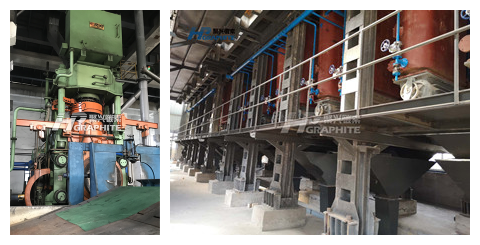MIIT: January to March 2022 iron and steel industry operation status

MIIT: January to March 2022 iron and steel industry operation status
In the first quarter of 2022, the production and operation of the iron and steel industry was generally stable. Under the condition of high production and operation data base in the same period of 2021, steel industry production, iron ore import, steel import and export, steel prices and industrial benefits decreased slightly. Juxing graphite electrode is widely used in iron and steel industry.

1. Steel production remained at a low level. According to National Bureau of Statistics of China (NBS) statistics, from January to March, China's crude steel output was 243 million tons, down 10.5% year-on-year; Pig iron output was 201 million tons, down 11.0% year-on-year; Steel output was 312 million tons, down 5.9% year-on-year. According to the data, the average operating rate of national blast furnaces from January to march was 74.1%, down 15.7% year-on-year.
2. Imported iron ore price fluctuated at a high level. According to Iron and Steel Association data, imported iron ore prices rebounded from late November last year and reached a year-high of $162.6/ton on March 8, up $43.7/ton or 36.7% from the end of last year. At present, it remains at a high level of around $150.5/ton. Imported iron ore price was $150.5/ton on April 22. According to General Administration of Customs data, 268 million tons of iron ore were imported from January to March, down 5.2% year-on-year; Imported iron ore average price was $111.3/ton, down 31.3% year-on-year.
3. Steel import and export decreased significantly. According to General Administration of Customs data, from January to March, China exported 13.18 million tons of steel, down 25.5% year-on-year, and the average export price was $1412/ton, up 64.7% year-on-year; Imported steel was 3.22 million tons, down 13.4% year-on-year, and the average import price was $1488/ton, up 30.2% year-on-year. Average export prices and import prices are basically the same.
4. Steel consumption demand is insufficient. From January to March, steel consumption declined significantly, and steel consumption peak season was not prosperous. Corporate inventories rose sharply and social inventories fell significantly. According to Iron and Steel Association data, as of mid-April, the steel inventory of key iron and steel enterprises was 19.67 million tons, up 23.6% year-on-year. The social inventory of five major varieties in 21 major cities was 13.34 million tons, down 8.3% year-on-year.
5. Steel prices rose steadily. Since this year, steel prices have fluctuated slowly and slightly upward. According to Iron and Steel Association data, domestic steel average price composite index from January to march was 135.9 points, up 4.4% year-on-year. Rebar average price was 4769 yuan/ton, up 6.2% year-on-year; Hot rolled coil average price was 5075 yuan/ton, up 3.3% year-on-year. As of April 22, the domestic steel price composite index was 142.2 points, up 8.0% from the end of last year and down 2.6% from the same period last year.
6. Enterprises benefits decreased year-on-year. According to Iron and Steel Association statistics, from January to March, the operating income of key large and medium-sized iron and steel enterprises was 1.50 trillion yuan, down 3.3% year-on-year; Total profit was 55.3 billion yuan, down 25.8% year-on-year; Profit margin was 3.7%, down 1.1 percentage points year-on-year. According to National Bureau of Statistics of China (NBS) data, from January to March, the added value growth rate of ferrous metal smelting and rolling processing industry fell 2.4% year-on-year, and the added value growth rate of ferrous metal mining and selection industry increased by 12.0% year-on-year.
7. Industry investment differentiation is obvious. From January to March, the investment in ferrous metal smelting and rolling processing industry decreased significantly, while investment in ferrous metal mining grew rapidly. According to National Bureau of Statistics of China (NBS) data, the cumulative growth rate of fixed asset investment in ferrous metal smelting and rolling processing industry increased by 7.0% year-on-year, down 59.1 percentage points from the same period last year; The cumulative growth rate of fixed asset investment in ferrous metals mining and dressing industry increased by 89.8% year-on-year, 83.3 percentage points higher than the same period last year. Reading more iron and steel news, please contact us.
No related results found








0 Replies